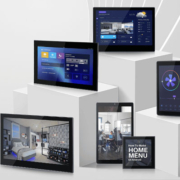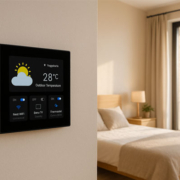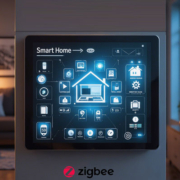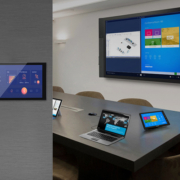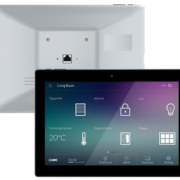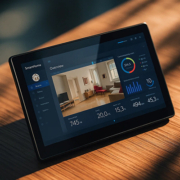Can Chinese Smart Home Panel Factories Do OEM/ODM Customization?
As smart home technology becomes increasingly integrated into residential and commercial spaces, more international brands, system integrators, and startups are turning to Chinese manufacturers to produce customized smart home control panels. These control panels, often wall-mounted Android or Linux-based devices, serve as the central hub for managing lighting, HVAC, security, sensors, and multimedia within a smart ecosystem.
One of the biggest questions buyers ask is: Can Chinese smart home panel factories truly handle OEM/ODM customization?
Understanding OEM vs. ODM in Smart Panel Manufacturing
Before diving deeper, let’s clarify the two key models of customization:
-
OEM (Original Equipment Manufacturer):
You provide the design or concept (e.g., UI style, logo, packaging), and the factory manufactures the product accordingly. You use their existing hardware platform with your branding. -
ODM (Original Design Manufacturer):
The factory provides both hardware and software design capabilities. You can modify housing, interfaces, internal architecture, and firmware. The final product is often exclusive and can be patented under your brand.
In China, many smart panel factories offer both options — flexible enough to suit startups, brand owners, and large enterprises alike.
What Customization Do Chinese Factories Typically Support?
1. Hardware Customization
- Screen Sizes: From 4-inch to 10.1-inch panels (IPS, TFT, capacitive touch)
- Panel Materials: Aluminum alloy, ABS, tempered glass front
- Color and Finish: Custom colors, matte/glossy surface, silk-print logos
- Interface Options: RS485, Zigbee, Ethernet, Wi-Fi, Bluetooth, PoE
- Sensor Integration: Temperature, humidity, PIR, CO₂, light sensors
2. Firmware & OS-Level Customization
- Android or Linux System Configuration
- Boot Logo & Splash Screen Branding
- Preloaded Apps & Platform Integration (Tuya, Google Assistant, MQTT, etc.)
- UI/UX Design: Custom user interface skins and multilingual support
- API/SDK Support: For third-party app developers or in-house platforms
3. Packaging & Branding
- Branded packaging box, manuals, QR codes
- Product labels (SNs, barcodes, certification marks)
- Export documentation (CE, FCC, RoHS, UKCA, etc.)
4. Cloud & App Connectivity
- ODM factories often assist with linking panels to Tuya Cloud, AWS IoT, Home Assistant, or private MQTT servers.
- Some suppliers offer companion mobile app development or integration SDKs.
Examples of Chinese Factories Offering OEM/ODM Smart Panel Services
1. Portworld Technology (Shenzhen)
Specialty: Android-based smart home panels with deep firmware customization
OEM/ODM Capabilities:
- Android versions from 8.1 to 13 with BSP source code support
- Custom touch panel hardware from 4” to 10.1”
- White-label UI/UX design, international languages
- Integration with Tuya, HomeKit (via gateway), Zigbee, RS485
- Packaging, manuals, and multilingual after-sales support
Portworld is known for handling smart home OEM projects from concept to container delivery. Ideal for global smart home brands needing long-term support.
2. CoolKit / eWeLink (Tuya Supplier)
Offers Tuya-compatible panels and OEM options for Zigbee/Wi-Fi based control panels, mainly for consumer-grade projects.
3. Seamoor Industrial
Focuses on Android/Linux smart touch terminals with ODM-level circuit design and long-term software maintenance.
Why Do Foreign Brands Prefer OEM/ODM from China?
- Speed: Rapid prototyping within 7–15 days.
- Cost-Effective Engineering: Access to components, tooling, and engineers all in one region.
- One-Stop Solution: From PCB to housing, software to assembly, all under one roof.
- Export Experience: Most factories are familiar with international logistics, customs, labeling, and certifications.
- Language Support: Major OEM suppliers have English-speaking sales and technical teams.
Challenges to Be Aware Of
Despite the advantages, here are a few things buyers should manage:
- IP Protection: Use NDAs and contracts to protect your designs.
- Firmware Ownership: Clarify if firmware and source code are exclusive.
- Minimum Order Quantity (MOQ): Most full customizations require 100–500 units minimum.
- Post-Sale Support: Choose suppliers offering long-term software updates or bug fixes.
- Compliance & Certification: Ensure the factory provides test reports and can pass EU/US safety standards.
Real Use Case: Portworld OEM for European Smart Home Brand
A European smart home startup approached Portworld to develop a white-label 5-inch PoE smart panel running Android 11. The requirements included:
- Custom UI in French, German, and English
- Integration with a proprietary cloud control app
- HomeKit compatibility via bridge gateway
- EU-certified packaging and labeling
- OTA firmware update system
Within 45 days, Portworld delivered the first pilot batch with full documentation, and within three months, mass production was underway, exporting to five European countries.

